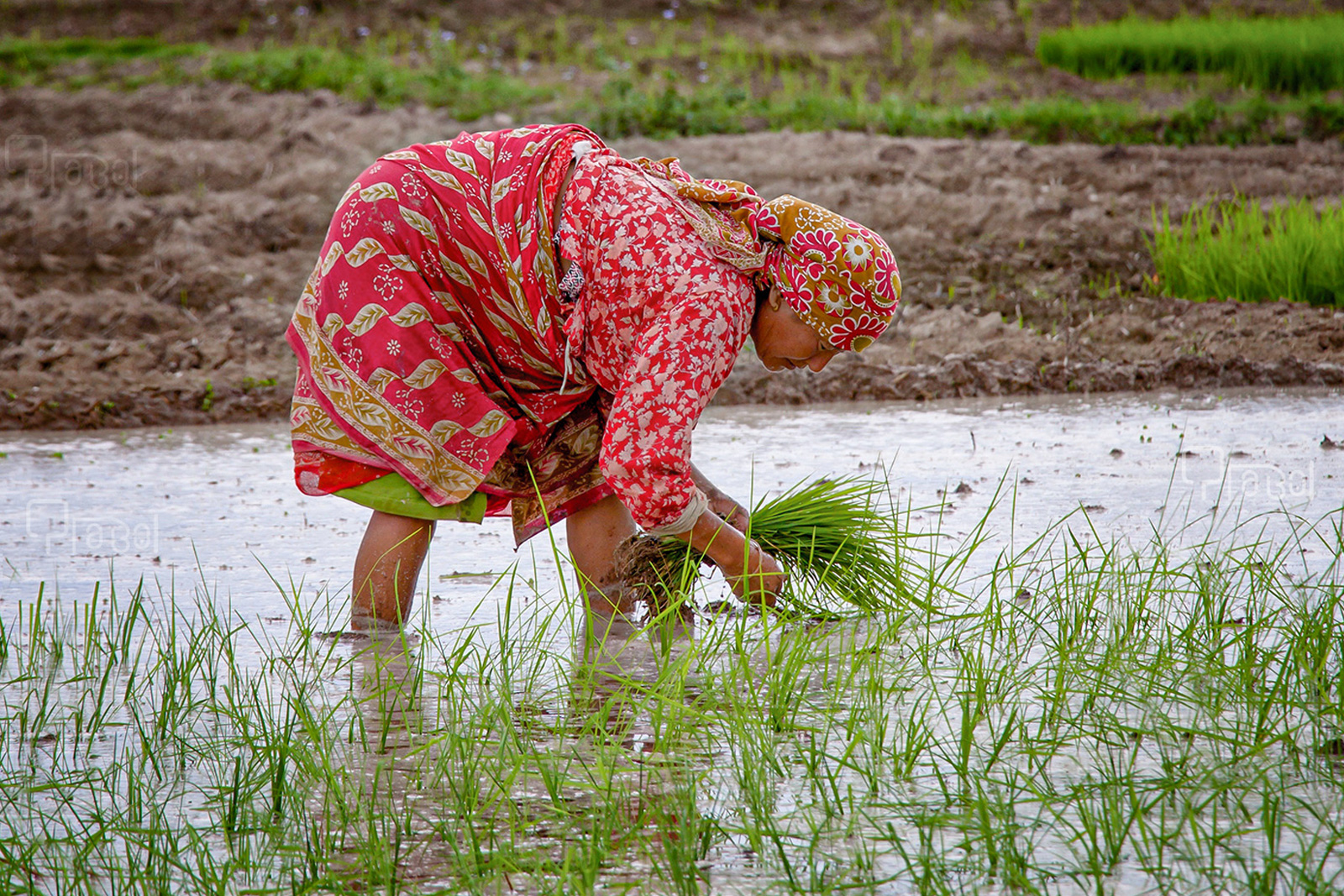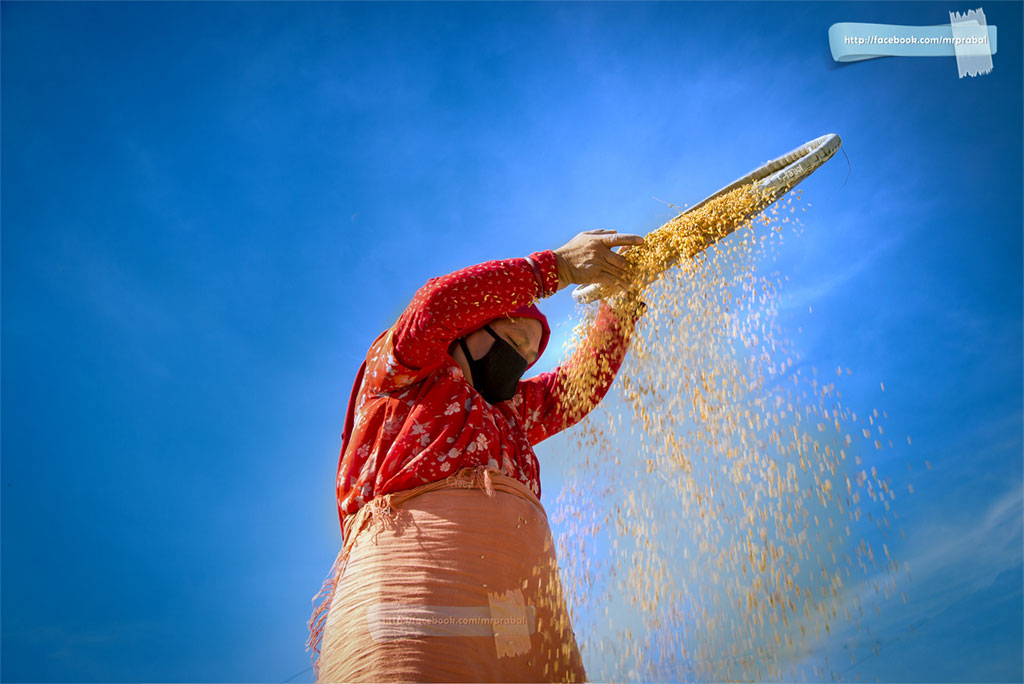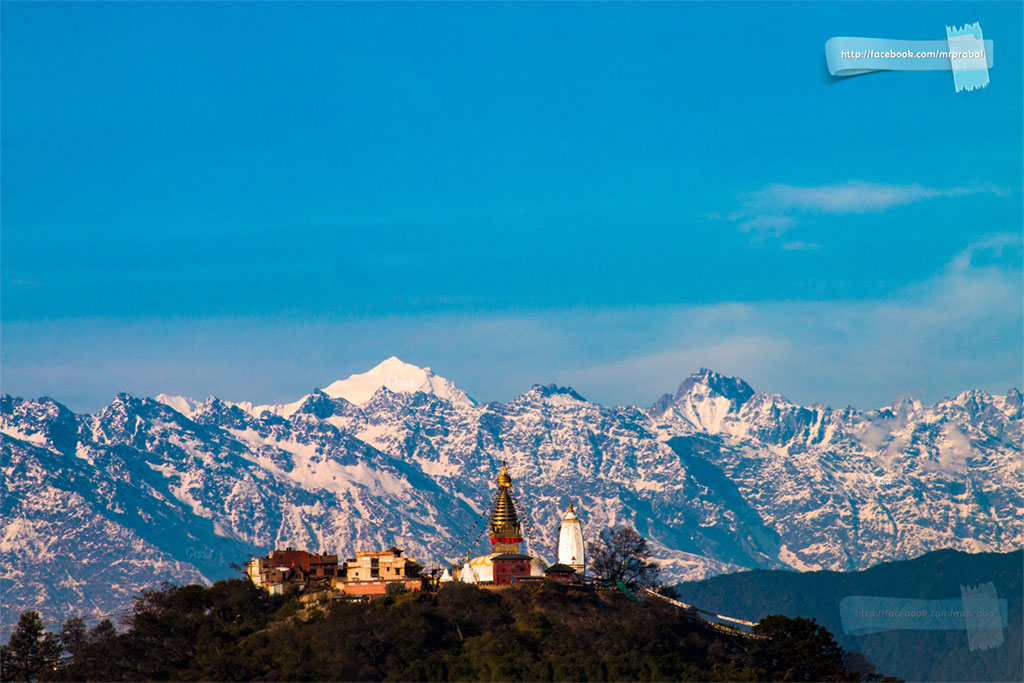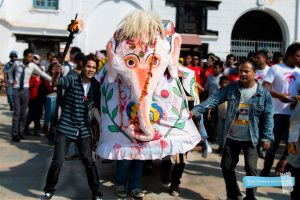Nestled in the lap of the Himalayas, experiences a unique pattern of six distinct seasons of Nepal: Spring, Summer, Monsoon, Harvest Time (Sharad), Autumn, and Winter. Each seasons of Nepal brings its own climate, natural beauty, and cultural significance, profoundly influencing the daily lives and traditions of the Nepalese people. The changing seasons are celebrated through a variety of festivals that reflect the harmony between nature and the spiritual beliefs of the people.
Table of Contents
Spring Seasons (Basanta Ritu)

Seasons of Nepal: Basanta (Spring)
Spring, known as Basanta Ritu in Nepal, spans from March to April. Among all seasons of Nepal, it is synonymous with renewal and rebirth. As the snow begins to melt, the hills and ancient valley of Nepal are transformed into a vibrant tapestry of colors. The blooming rhododendrons, which are also the national flower, paint the landscapes in hues of red, pink, and white.
Spring Festival
Spring season of Nepal is also a time for joy and celebration, and nothing embodies this more than Holi, the festival of colors. Holi is celebrated with great enthusiasm throughout Nepal, where people splash each other with colored powders and water. This festival not only marks the arrival of spring but also symbolizes the victory of good over evil, as it commemorates the story of Prahlad and Holika.
Summer Seasons (Grishma Ritu)
From May to June, Nepal enters the summer season, or Grishma Ritu. The Terai region, which lies at a lower altitude, experiences significantly warmer temperatures, while the hilly and mountainous regions remain relatively cooler, making it an ideal time for trekking and outdoor adventures. This season also witnesses the celebration of the Rato Machindranath Jatra in Patan, one of the oldest and longest festivals in Nepal.
Summer Festival
The festival is dedicated to the rain god Machindranath and is celebrated with a grand chariot procession that winds through the streets of Patan. People gather to pull the massive chariot, believing that this act will ensure timely rainfall and a good harvest.
Monsoon Seasons (Varsha Ritu)

Seasons of Nepal: Varsha Ritu (Monsoon)
Monsoon, or Varsha Ritu, arrives in Nepal from July to August, bringing with it heavy rainfall. The rains rejuvenate the parched earth, turning the fields into lush green landscapes. This season is critical for agriculture, as farmers eagerly plant rice, the staple food of Nepal.
Monsoon Festival
Despite the rain, the monsoon season is a time of celebration, particularly during the festival of Janai Purnima. This festival is observed by Hindu men, who change their sacred thread, known as Janai, as a symbol of their renewed commitment to their spiritual duties. On the same day, sisters tie a rakhi, a protective thread, around their brothers’ wrists, wishing them safety and well-being.
Harvest Time (Sharad Ritu)

Seasons of Nepal: Sharad Ritu (Harvest)
Sharad Ritu, or the harvest season, occurs from September to October and is a time of abundance and thanksgiving in Nepal. The fields are golden with ripe crops, and the air is filled with the anticipation of the upcoming Dashain festival, the most significant and longest festival in Nepal.
Harvest Festival
Dashain celebrates the victory of the goddess Durga over the demon Mahishasura, symbolizing the triumph of good over evil. Families gather to receive blessings, fly kites, and partake in feasts. Houses are cleaned and decorated, and animals are sacrificed as offerings to the gods. This season is marked by a sense of togetherness, as families reunite and celebrate the harvest and prosperity.
Autumn Seasons (Hemanta Ritu)
Following the harvest season, autumn, or Hemanta Ritu, graces Nepal from November to December. With clear skies, moderate temperatures, and breathtaking views of the Himalayan peaks, this is the ideal time for trekking and outdoor activities.
Autumn Festival
The highlight of autumn is Tihar, also known as the festival of lights. Tihar is celebrated over five days, each dedicated to different animals and deities. The first day honors crows, the messengers of death, while the second day is dedicated to dogs, symbolizing loyalty. On the third day, cows, representing prosperity, are worshipped, and homes are illuminated with oil lamps and candles to welcome the goddess Laxmi, the deity of wealth. The final day is Bhai Tika, where sisters place tikas on their brothers’ foreheads, praying for their long life and happiness.
Winter Seasons (Shishir Ritu)

Seasons of Nepal: Shishir (Winter)
Winter, or Shishir Ritu, spans from January to February, bringing colder temperatures, especially in the higher altitudes. Despite the chill, winter is a season of warmth and festivities in Nepal.
Winter Festival
One of the key festivals during this time is Maghe Sankranti, which marks the end of the winter solstice and the start of longer days. On this day, people take ritual baths in holy rivers, eat special foods like sesame seeds, molasses, and yams, and gather with family to celebrate the turning of the seasons.
In conclusion, the six seasons of Nepal not only shape the natural environment but also play a pivotal role in the cultural and religious life of the people. Each season brings with it a series of festivals that highlight the close relationship between nature and spirituality, reflecting the deep-rooted traditions and values that define Nepalese society.



